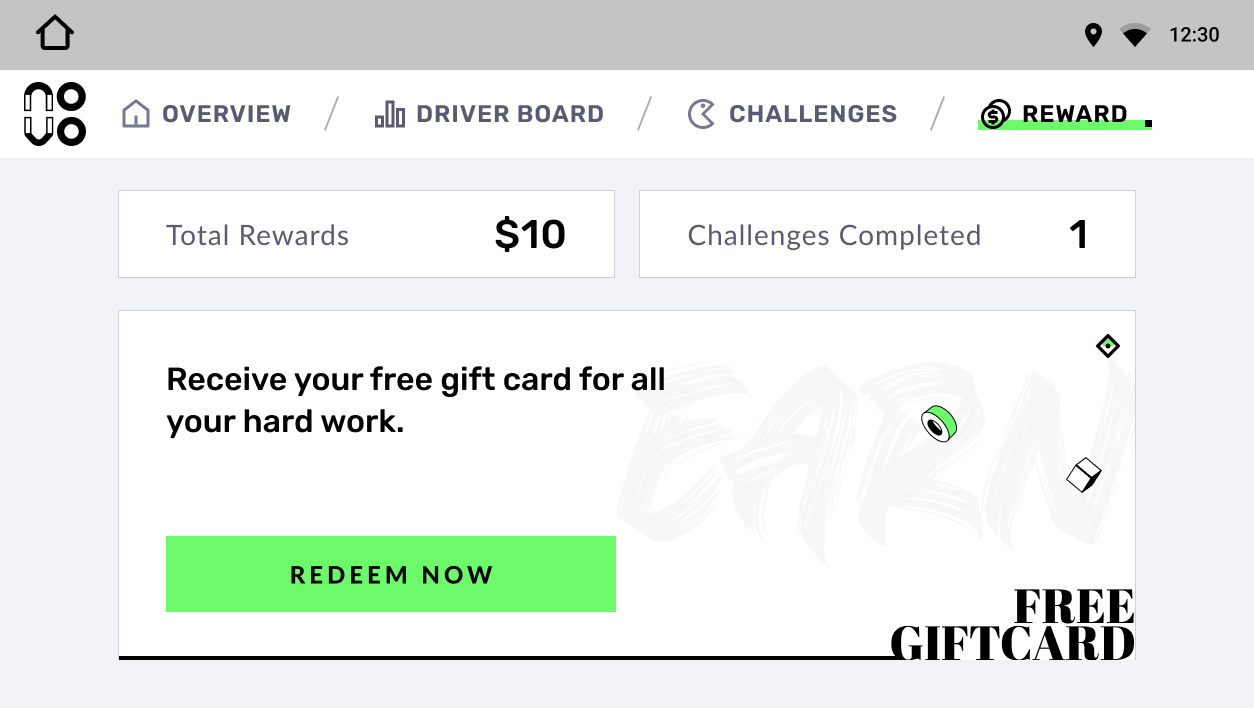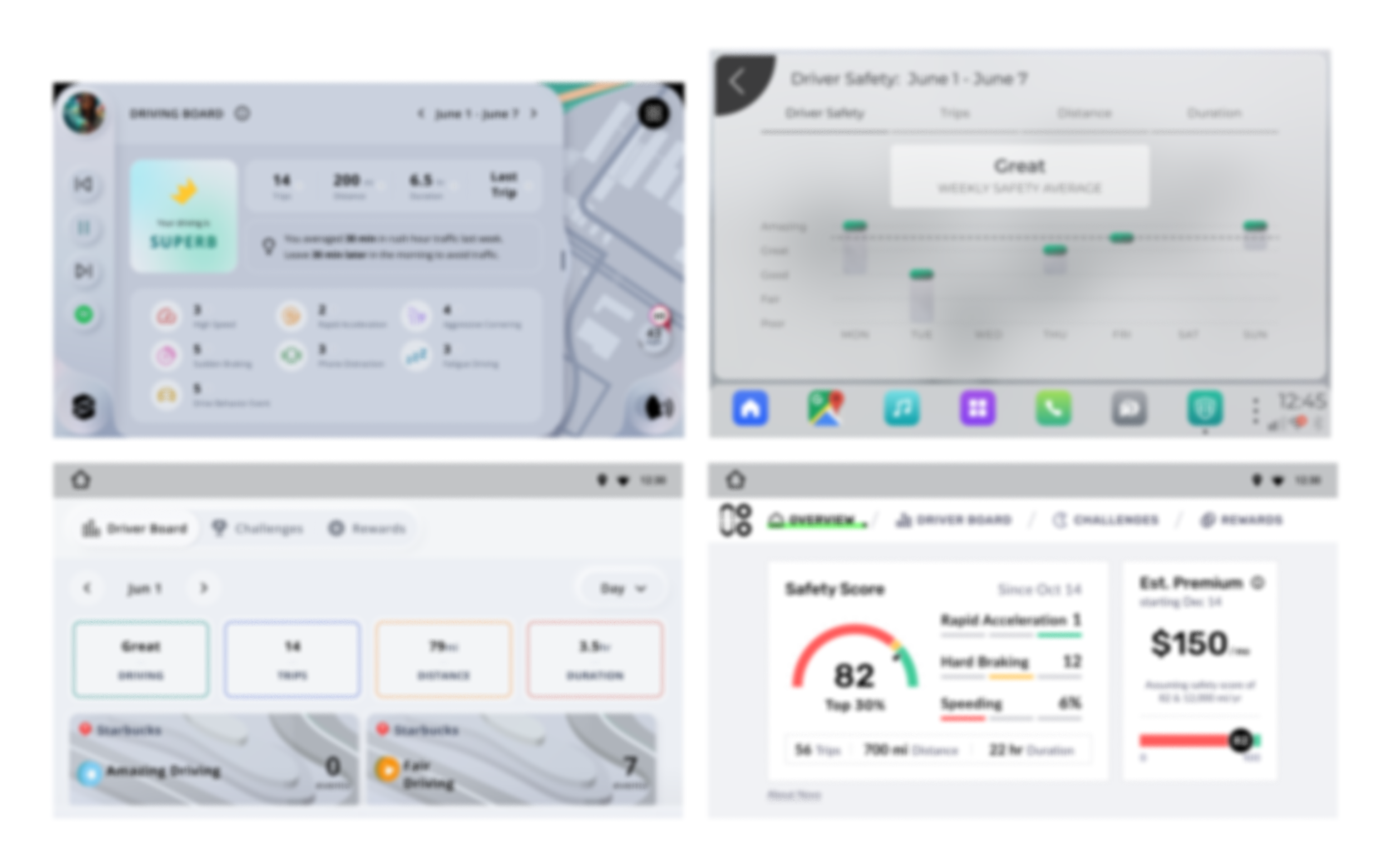
Novo Ride by Telenav
Telenav designed an in-car infotainment app focused on promoting safer driving. The app provides drivers with clear insights into their on-road behavior, including how often they hard brake, accelerate aggressively, or engage in high-speed driving. These factors are combined into an overall safety score, giving drivers a simple, meaningful way to understand and improve their driving habits.
App Overview

Objective
From the viewpoint of the end user
I want the app to reveal insights about myself that I might not notice on my own. For example, if I often feel tired in the morning, I’d like to understand whether it’s tied to my sleep habits.
I also want the app to help me get fair value from my car insurance. Since I’m a safe driver, I expect my rates to reflect my behavior on the road and to be rewarded for driving responsibly.
From the viewpoint of the business
The app serves as a marketing tool to encourage drivers to switch from their current insurance provider to Novo Insurance. By showcasing personalized insights and rewards, it builds trust and creates a compelling reason to consider a change.
The business also aims to form partnerships with automotive companies, using the app as a bridge to offer car insurance directly to vehicle owners.
Finally, the app demonstrates that Novo’s technology is consumer-ready, highlighting the company’s ability to deliver innovative, user-friendly solutions at scale.
Design Process
Latest Status
The Novo Ride app was eventually discontinued. Telenav’s core navigation business for OEMs was in decline, and the app never reached scale beyond a small pool of users from aftermarket head unit sales. As a result, company focus shifted to mobile app development for the Novo Car Insurance program.
Lessons Learned
Market Fit Matters More Than Vision
The total addressable market was smaller than expected, and awareness remained low. Early distribution through aftermarket head units and a limited trial in the Audi app store drove little traction. In hindsight, launching first on mobile (CarPlay/Android Auto) would have been the stronger path.
Business Readiness Must Match Technology
Selling to automotive partners stalled because insurance wasn’t yet available in all 50 states. Even with a strong product, misalignment between business execution and the technology stack can block adoption.
Practical Insights Could Have Added More Value
While the app emphasized driver safety scoring, I believe everyday metrics such as miles driven, fuel costs, or trip summaries would have been more compelling entry points, with safety insights layered on top.
Rewards Drive Engagement
The rewards feature was consistently the most engaging part of the app, especially in Daisata head units. In retrospect, rewards should have been the lead story for marketing, design, and product development.










